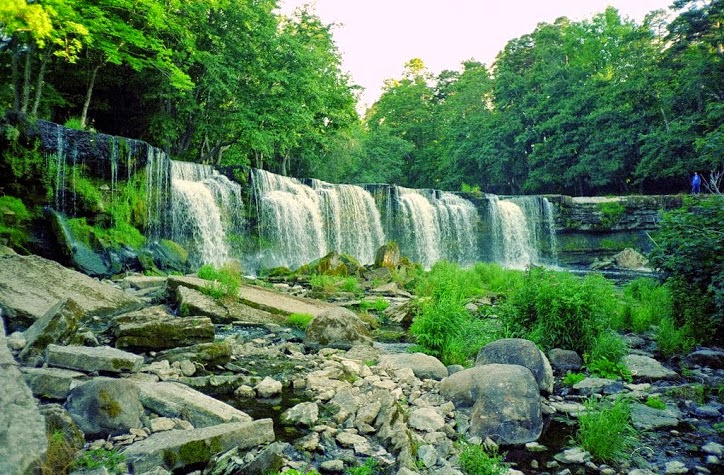The black sickle bill also called Epimachus
fastosus is a big bird of heaven of mid-mountain forests of New Guinea. The lovely
sicklebill's diet contains mostly of fruits and arthropods. The male of the
species is polygamous and does a horizontal courtship display with the pectoral
plumes raised around its head. In the wild, the bird has hybridized with the
“Arfak Astrapia” to make offspring that were once considered two distinctive
species, the Elliot's sicklebill (Epimachus ellioti) and the “Astrapian
sicklebill” (Astrapimachus astrapioides). The both species are usually viewed
by most mainstream ornithologists as hybrids, but a minority of ornithologists considers
“Ellioti” may be a valid species.
Because of constant habitat loss, insignificant population size, and
hunting in some areas for food and its tail feathers, the black sicklebill is
classified as Vulnerable on the IUCN Red List of Threatened Species. The lovely
Black Sicklebills are patchily distributed in the mountainous areas of western
and central New Guinea. From the Tamrau and Arfak Mountains in Vogelkop of Papua (previously Irian Jaya
Indonesia), to the Kubor and Kratke ranges and a some localities in the
Torricelli and Bewani mountains in Papua New Guinea.
The Black Sicklebills are in the vicinity common, for instance on Mount Bosavi
and the Arfak Mountains, and usually scarce to rare or locally absent. They classically
occur in mid-montane forest at 1,280-2,550 m, but may move to lower or higher
elevations. They mainly occur in primary forest, and are less often recorded in
nearby secondary growth and gardens. The Black Sicklebill is the leading
plumbed member of its family, including the tail, the males specie is average
100 cm in length and the females specie around 48 cm. These bird-of-paradises
have long, down curved bills and very long tails.
The male has a habitually black plumage with glossy green, blue and purple
scale like feathers. He has beautiful red eyes, and a bright yellow mouth and a
long curved black bill. The bird has most distinguishing feature is the huge
sabre-shaped tail and large fan-like plumes on the sides of his chest. The
female specie is little than the male. Her plumage is habitually reddish-brown,
with chestnut wing-feather fringes and fine, dark brown barring on her
off-white under parts, while her eyes are red-brown. The Black Sicklebill looks
alike to the Brown Sicklebill (which replaces it at higher elevations), but can
be distinguished by the finer, more de-curved bill and pale blue eyes. However
male is browner and female doesn't have any chestnut coloration on her
wings.The Buff-tailed Sicklebillhas a short, rounded tail. Female Arfak
Astrapia has a short bill.
The Black Sicklebills hunt for fruit and small animals in the tree canopy; as
well as probing into moss and plants for insects and other arthropods, like as
crabs, lice, shrimp, spiders, scorpions, centipedes and millipedes. Therefore males
make paired, sharp, liquid Quik, and simple nasal contact calls. The Black
Sicklebills do not shape strong pair bonds. The male will mate with quite a lot
of females over the breeding season. In order to entice females, he usually performs
a horizontal courtship display with the pectoral plumes raised around his head.
The female bird builds the nest and attends to the young alone. The Black
Sicklebills have hybridized with the Arfak Astrapia in the wild, making
offspring that were once well-thought-out a separate species, the Elliot's Sicklebill,
Epimachus ellioti. However few believe this was a valid species that is perhaps
critically endangered or extinct; it is usually considered a hybrid by most
mainstream ornithologists.





































